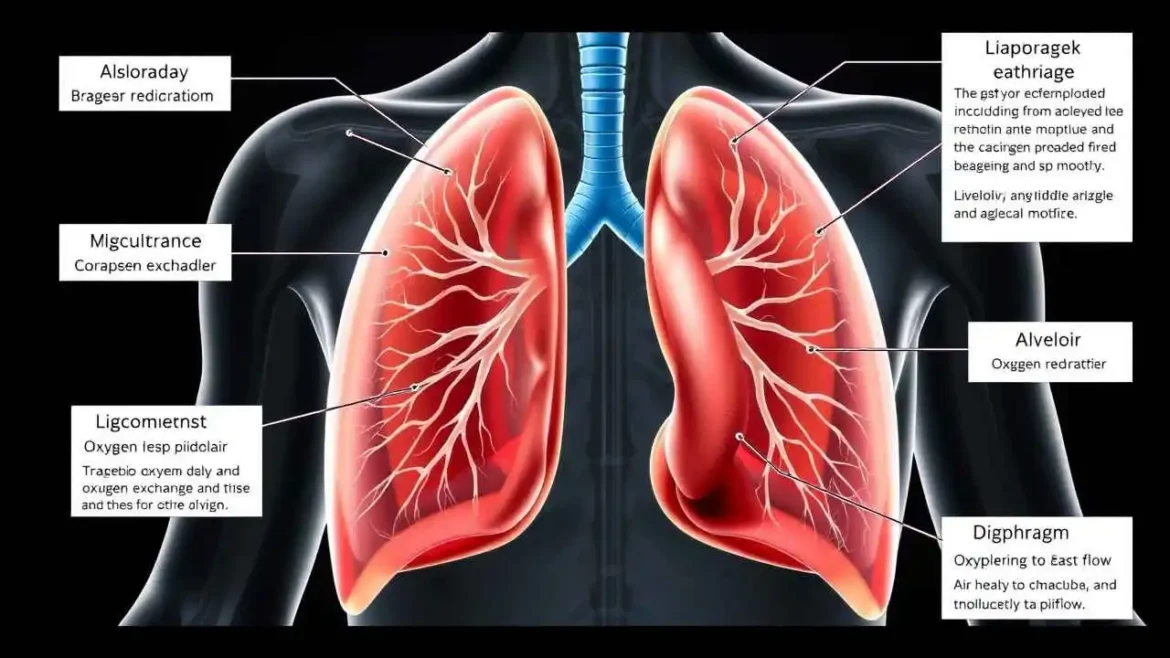
Respiratory System: All We Need to Know.
The respiratory system is one of the most vital systems in the human body, responsible for delivering oxygen to our cells and removing carbon dioxide, a waste product of metabolism. Without a properly functioning respiratory system, our bodies would not be able to sustain life. In this article, we will explore the anatomy, function, common diseases, and ways to maintain a healthy respiratory system. By understanding the respiratory system thoroughly, we can appreciate its importance and take better care of our health.
“The human body is a complex system of interconnected parts, and the respiratory system is the lifeline that keeps it all running smoothly.” — Anonymous
Anatomy of the Respiratory System
The respiratory system can be broadly divided into two parts: the upper respiratory tract and the lower respiratory tract.
Upper Respiratory Tract
- Nose and Nasal Cavity: Air enters the respiratory system through the nostrils where it is filtered, warmed, and humidified.
- Pharynx (Throat): A muscular tube that serves both respiratory and digestive functions.
- Larynx (Voice Box): Contains the vocal cords and routes air into the lower respiratory tract.
Lower Respiratory Tract
- Trachea (Windpipe): A tube that connects the larynx to the bronchi.
- Bronchi: Two main branches that lead to each lung, further dividing into smaller bronchioles.
- Lungs: The primary organs of respiration containing alveoli where gas exchange occurs.
- Alveoli: Tiny air sacs surrounded by capillaries where oxygen diffuses into the blood and carbon dioxide diffuses out.
Table 1: Key Components of the Respiratory System and Their Functions
| Component | Location | Function |
| Nose | Upper respiratory tract | Filters, warms, and moistens inhaled air |
| Pharynx | Upper respiratory tract | Passageway for air and food |
| Larynx | Upper respiratory tract | Produces sound and directs air to trachea |
| Trachea | Lower respiratory tract | Conducts air to bronchi |
| Bronchi | Lower respiratory tract | Distributes air into the lungs |
| Lungs | Thoracic cavity | Facilitate gas exchange |
| Alveoli | Inside lungs | Site of oxygen and carbon dioxide exchange |
How the Respiratory System Works
The process of respiration involves several stages:
- Ventilation: The movement of air in and out of the lungs. During inhalation, the diaphragm contracts and moves downward, expanding the chest cavity and drawing air in. During exhalation, the diaphragm relaxes, pushing air out.
- External Respiration: Gas exchange between the alveoli and the blood in the pulmonary capillaries. Oxygen moves from the alveoli into the blood, while carbon dioxide moves from the blood into the alveoli.
- Transport of Gases: Oxygen-rich blood is carried by red blood cells to the tissues, while carbon dioxide-rich blood returns to the lungs.
- Internal Respiration: Gas exchange between the blood and body tissues. Oxygen diffuses into cells, and carbon dioxide diffuses out to be transported back to the lungs.
The Process of Breathing
Breathing, also known as respiration, is the process by which we exchange gases with the environment. The process involves two main stages: inspiration (inhalation) and expiration (exhalation).
Inspiration (Inhalation)
- The diaphragm contracts and flattens, increasing the volume of the chest cavity.
- The intercostal muscles between the ribs contract, further expanding the chest cavity.
- Air rushes into the lungs through the airways, filling the alveoli with oxygen-rich air.
- Oxygen diffuses into the bloodstream, binding to hemoglobin in red blood cells.
Expiration (Exhalation)
- The diaphragm relaxes and returns to its dome shape, decreasing the volume of the chest cavity.
- The intercostal muscles relax, further reducing the volume of the chest cavity.
- The lungs deflate, pushing air out of the airways and into the environment.
- Carbon dioxide, a waste product of cellular metabolism, is removed from the bloodstream and exhaled out of the body.
Functions of the Respiratory System
The respiratory system performs several critical functions that are essential for maintaining our overall health. Some of these functions include:
- Oxygenation: The respiratory system brings oxygen into the body, which is necessary for cellular metabolism and energy production.
- Carbon Dioxide Removal: The respiratory system removes carbon dioxide, a waste product of cellular metabolism, from the body.
- pH Regulation: The respiratory system helps regulate the body’s acid-base balance by controlling the amount of carbon dioxide in the blood.
- Filtering: The respiratory system filters the air we breathe, removing dust, bacteria, and other pathogens from the lungs.
Common Respiratory Diseases





